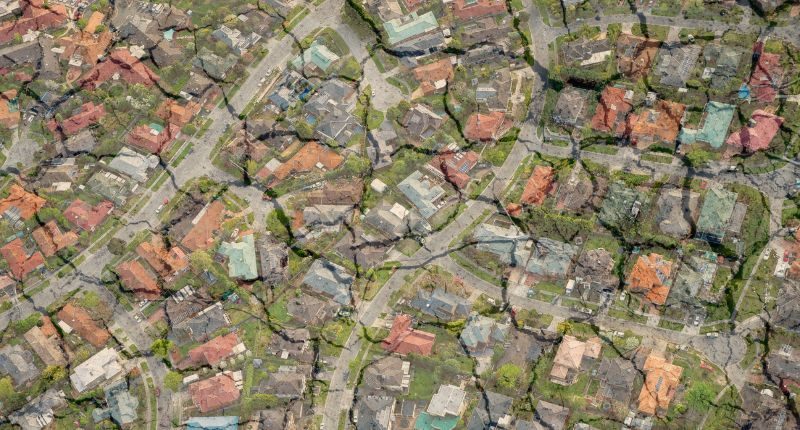
- Over 6,600 affordable rentals to disappear this year alone
- Calls are being made for more social housing to be built
- Rental price growth appears to be slowing
Australia’s rental sector is set for a worrying few years ahead with thousands of affordable rentals set to disappear.
Not exactly wiped from the market, but those affordable rentals will be “lost” as the affordable housing scheme known as the National Rental Affordability Scheme (NRAS) ends in 2026.
What is the National Rental Affordability Scheme?
NRAS was introduced in 2008 under the Rudd government.
The scheme saw the Australian Government, in conjunction with the states and territories, provide financial incentives to increase the supply of affordable rental housing, reduce rental costs for low to moderate income households, and encourage large-scale investment and innovative delivery of affordable rental housing.
The Abbott Government axed the scheme some six years later in its 2014-15 Federal Budget.
Industry voices concerns as rental crisis to deepen
Concerns have been raised by Everybody’s Home, a coalition of housing, homelessness and welfare organisations, with a focus on fixing the housing crisis.
The industry is concerned about the over 6,600 rentals that will no longer be on the NRAS this year. Over 9,000 rentals will come off the scheme next year, with nothing left by 2026 when the scheme draws to a close.
Number of allocations remaining nationally by calendar year as at 30 September 2022

National spokesperson for Everybody’s Home, Maiy Azize, said the losses come on top of Australia’s massive shortfall in social and affordable housing.
“Australia already has a social housing shortfall of 500,000 homes, and the rental market has never been tougher,” she said.
“These figures show that we’re losing even more affordable rentals at a time when Australians can least afford it.
“With thousands of affordable rentals set to disappear, we need the federal government to step up and take action.
“We’re calling on them to build 25,000 new social homes each year to help end this crisis. More social housing would lift people out of rental stress, and free up more cheap rentals for people who need them.
“Many Australian suburbs have hit record high rents and thousands of tenants are in rental stress. The government can start changing that from this year if it’s ambitious enough.”
This year, Queensland will be hardest hit by the phasing out of the scheme, losing 2,499 affordable NRAS houses.
Victoria will lose 1,356 allocations, while Western Australia will see the loss of 1,110. In South Australia, 806 will be removed and NSW will lose 605.
Experts call out expensive scheme
NRAS was criticised by the Grattan Insitute’s Brendan Coates and then Grattan Institute’s Jessi Horder-Geraghty in a 2019 article published both on the ABC and The Conversation, titled “Rudd’s rental affordability scheme was a $1 billion gift to developers. Abbott was right to axe it“.
Criticism in the article, and in a presentation delivered to the UNSW Social Policy Conference in 2019, included:
- A higher subsidy was provided than was needed,
- Subsidies did not vary with size or location of dwelling,
- Most NRAS dwellings were small,
- Some NRAS-eligible households weren’t eligible for rent assistance,
- NRAS delivered fewer properties than planned and at a slower rate, among other issues.
There was absolutely a case for assisting those in need, the presentation suggested alternatives to NRAS included more social housing, as opposed to affordable housing, targeting people at serious risk of becoming homeless, and more.
Calling on both evidence from Australia and globally, it was noted that “… social housing substantially reduces tenants’ risk of homelessness.”
Other recommendations included boosting Commonwealth Rent Assistance by 40% and index to low-income rents, fixing supply to make all housing cheaper, and strengthening tenancy law to make renting more secure.
A political barometer by the Grattan Insitute on the impact of policy versus magnitude of change

Rental price growth stagnates, good signs ahead?
PropTrack’s latest rental data in its Market Insight 11 January 2023, shows practically no changes in rental rates across the country.
Rental prices for houses across the capital cities saw 0% change, with units moving up 2.2%; dwellings overall saw a quarterly change of 1%. The year-on-year change for swellings was 10%, similar to CoreLogic’s 10.2%. The report said March 2022 quarter was the last time rents were unchanged.
CoreLogic’s latest data also shows some easing in the rental market. CoreLogic’s annual rent growth data showed an increase of 10.2%, with December quarter growth recorded at 2.0%, down from the September quarter growth of 2.3%.
CoreLogic Head of Research and report author Eliza Owen said December marked the second consecutive quarter that the pace of growth slowed, and coincided with a small lift in the rental vacancy rate to 1.17% in December (up from a recent low of 1.05% in the previous month).
“The decline in quarterly rental growth rates observed in the December quarter was led by the capital cities where rents continued to increase but at a slightly slower rate than they have done in September and June quarters,” she said.
“While a slowdown in the pace of rent rises could be a sign that the rental market is starting to shift, it’s not great news for tenants just yet. Rents are still rising in most capital cities and regional areas with vacancy rates low.”
~~
For full details on any of the above, please see the original NRAS reports, Grattan Insitute articles and presentations, PropTrack reports, and CoreLogic reports on their respective websites.










